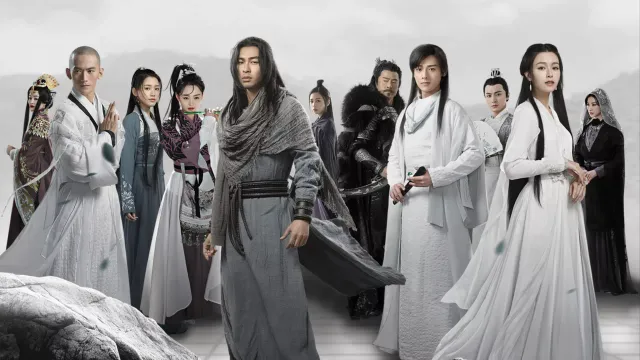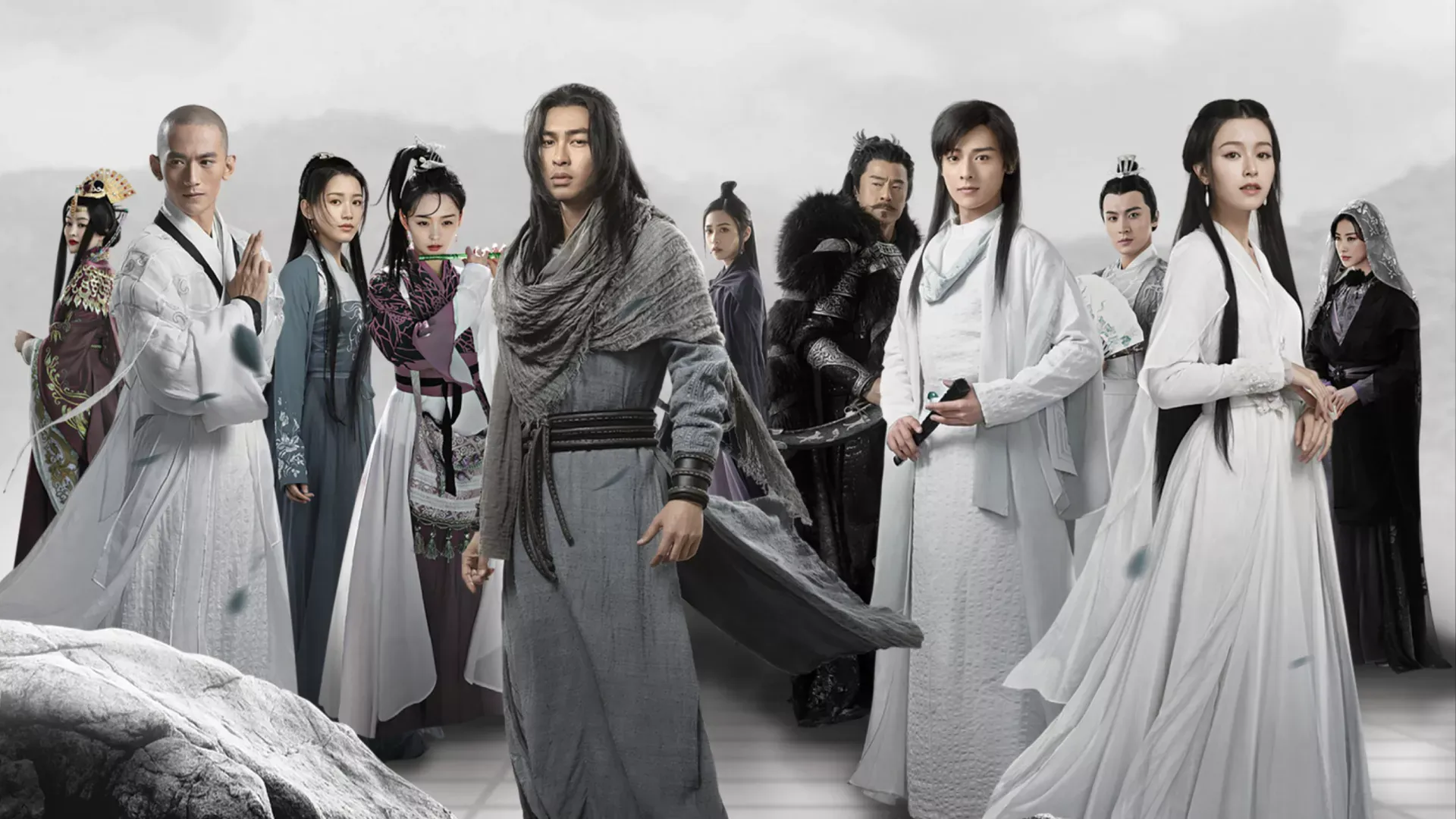Dali Kingdom (simplified: 大理国, traditional: 大理國, pinyin: Dàlǐ Guó) was a Buddhist kingdom in southwest China, modern-day Yunnan province, ruled by the Bai people of the Duan Clan from 937 to 1253 CE. During the events of Demi-Gods and Semi-Devils, the kingdom was under the reign of Duan Zhengming and served as a peaceful, culturally sophisticated state that maintained complex relationships with the Song Dynasty and other regional powers.
The Dali Kingdom represented a unique blend of Buddhist culture, martial arts tradition, and sophisticated governance in the southwestern region of China. Founded by the Bai people and ruled by the Duan Clan, Dali maintained a distinctive cultural identity while engaging in complex diplomatic relationships with neighboring powers. The kingdom’s emphasis on Buddhist principles and martial arts excellence created a peaceful yet formidable state.
The kingdom’s governance was characterized by a harmonious integration of Buddhist philosophy with practical administration. The kingdom’s martial arts, particularly the One Yang Finger technique, were renowned throughout the jianghu and contributed to Dali’s reputation as a center of both spiritual and martial excellence.
History
Foundation and early development
The Dali Kingdom was founded by Duan Siping in 937 CE, who established the kingdom after the collapse of the Nanzhao Kingdom. The early rulers focused on consolidating power in the southwestern region and establishing a stable, Buddhist-influenced government that could maintain independence from the larger powers to the north.
The kingdom’s early development was marked by the establishment of Buddhist institutions and the development of unique cultural traditions that blended Bai ethnic customs with Buddhist philosophy. This cultural synthesis created a distinctive identity that would characterize Dali throughout its existence.
Cultural and political development
During its peak period, the Dali Kingdom developed into a sophisticated state:
- Buddhist influence: Deep integration of Buddhist philosophy into governance and culture
- Martial arts tradition: Development of unique martial arts techniques, particularly the One Yang Finger
- Cultural achievements: Flourishing of arts, literature, and architecture
- Diplomatic sophistication: Complex relationships with Song Dynasty and other powers
Political landscape during the novel
During the events of Demi-Gods and Semi-Devils, the Dali Kingdom was under the reign of Duan Zhengming, who faced several challenges:
- Song relations: Maintaining friendly relations with the Song Dynasty while preserving independence
- Cultural preservation: Balancing Bai ethnic traditions with broader cultural influences
- Martial arts world: Managing relationships with various martial arts organisations
- Regional stability: Contributing to peace and stability in the southwestern region
Organisation
Royal government
The Dali Kingdom operated under a sophisticated Buddhist-influenced governance system:
Royal Family:
- Duan Zhengming - The reigning monarch during the novel’s events
- Duan Clan - The ruling family with deep martial arts traditions
- Royal court - Buddhist-influenced administrative structure
Administrative Structure:
- Buddhist institutions: Religious organisations with political influence
- Martial arts schools: Official recognition of martial arts organisations
- Civil administration: Bureaucratic system based on Buddhist principles
Cultural integration
The Dali maintained a unique approach to cultural integration:
Bai Traditions:
- Preservation of Bai ethnic customs and language
- Integration of traditional practices with Buddhist philosophy
- Emphasis on local cultural distinctiveness
Buddhist Influence:
- Deep integration of Buddhist principles into governance
- Religious institutions playing important political roles
- Cultural synthesis creating unique Dali identity
Martial arts abilities
Royal martial traditions
The Dali Kingdom maintained distinctive martial arts traditions:
One Yang Finger:
- Unique martial art passed down through the Duan Clan
- Renowned throughout the jianghu for its effectiveness
- Combines Buddhist philosophy with practical combat techniques
Dali martial arts:
- Integration of Buddhist principles with martial training
- Emphasis on both physical skill and spiritual development
- Unique techniques developed within the kingdom’s cultural context
Military organisation
The Dali military was organized around Buddhist principles:
Royal guards:
- Elite units trained in advanced martial arts
- Specialized in palace defense and VIP protection
- Recruited from both royal family and talented commoners
Border defense:
- Specialized units for frontier protection
- Integration of martial arts training with military discipline
- Cooperation with local Buddhist institutions
Philosophy
Buddhist governance
The Dali Kingdom was deeply influenced by Buddhist philosophy:
Compassionate rule:
- Emphasis on benevolence and compassion in governance
- Integration of Buddhist ethics into political decision-making
- Focus on harmony and peaceful coexistence
Cultural tolerance:
- Acceptance of diverse cultural traditions
- Integration of different ethnic groups under Buddhist framework
- Emphasis on mutual respect and understanding
Cultural distinctiveness
The Dali maintained a sophisticated approach to cultural identity:
Bai identity:
- Preservation of Bai ethnic cultural traditions
- Integration of local customs with broader cultural influences
- Creation of unique Dali cultural synthesis
Buddhist integration:
- Deep integration of Buddhist philosophy into all aspects of life
- Religious institutions playing central role in society
- Balance between spiritual and practical concerns
Notable members
Royal family
- Duan Zhengming (段正明 – Duàn Zhèngmíng) – Reigning emperor during the novel’s events
- Duan Zhengchun (段正淳 – Duàn Zhèngchún) – Prince and father of Duan Yu
- Duan Yu (段誉 – Duàn Yù) – Prince and protagonist of the novel
- Duan Siping (段思平 – Duàn Sīpíng) – Founding emperor of the Dali Kingdom
Government officials
- Dali officials – Various civil servants and military commanders
- Buddhist monks – Religious leaders with political influence
Martial arts masters
- Duan Clan masters – Martial arts experts from the royal family
- Buddhist martial artists – Monks skilled in martial arts
Relationships
Alliances
The Dali Kingdom maintained complex diplomatic relationships:
Song Dynasty:
- Generally friendly relations based on trade and cultural exchange
- Recognition of Dali’s independence in exchange for tribute
- Cooperation on border security and trade routes
Buddhist institutions:
- Close relationships with Buddhist temples and monasteries
- Religious exchanges and cultural cooperation
- Mutual support between religious and political institutions
Rivalries
The Dali faced limited direct conflicts due to its peaceful nature:
Regional powers:
- Generally peaceful relations with neighboring states
- Occasional border disputes resolved through diplomacy
- Competition for influence in border regions
Political connections
The Dali maintained sophisticated political networks:
Martial arts world:
- Official recognition of major martial arts organisations
- Integration of martial arts into royal traditions
- Use of martial arts for diplomatic and cultural purposes
Trade networks:
- Extensive trade relationships with neighboring states
- Control of important trade routes in southwestern region
- Use of trade to maintain political relationships
Locations
Capital and administrative centers
- Dali City – Royal capital and administrative center
- Royal Palace – Residence of the emperor and center of government
- Buddhist temples – Religious institutions with political influence
Military bases
- Royal training grounds – Facilities for martial arts training
- Border fortifications – Defensive positions along kingdom frontiers
- Buddhist monasteries – Centers for both religious and martial training
Cultural centers
- Buddhist temples – Religious institutions serving as cultural hubs
- Martial arts schools – Training facilities for royal and common martial artists
- Trade centers – Major cities serving as economic and cultural hubs
Behind the scenes
Historical background
The Dali Kingdom (937-1253 CE) represented a unique period in southwestern Chinese history. The kingdom was characterized by:
Cultural Achievements:
- Sophisticated integration of Buddhist and Bai cultural traditions
- Development of unique martial arts techniques
- Flourishing of arts, architecture, and literature
- Creation of distinctive cultural identity
Political Innovations:
- Buddhist-influenced governance system
- Integration of religious and political institutions
- Sophisticated diplomatic relationships with neighboring powers
- Balance between independence and regional cooperation
The Bai context
The Bai people are an ethnic group native to Yunnan province:
Cultural Distinctiveness:
- Unique language and cultural traditions
- Sophisticated agricultural and urban culture
- Advanced metalworking and artistic traditions
- Complex social organisation and political structures
Historical Significance:
- Established one of the most sophisticated kingdoms in southwestern China
- Created unique cultural synthesis of local and Buddhist traditions
- Influenced later developments in the region
- Left lasting cultural and political legacy
Cultural impact and legacy
The Dali Kingdom left a significant impact on the region:
Political Legacy:
- Buddhist-influenced governance influenced later developments
- Cultural synthesis model adapted by later states
- Diplomatic practices that shaped regional politics
Cultural Influence:
- Unique synthesis of Bai and Buddhist cultures
- Artistic and architectural achievements
- Martial arts traditions that influenced later developments
In Jin Yong’s works
The Dali Kingdom serves as a crucial historical backdrop in Demi-Gods and Semi-Devils, representing:
Cultural Complexity:
- The integration of ethnic and religious traditions
- The role of martial arts in maintaining cultural identity
- The balance between local traditions and broader cultural influences
Political Themes:
- The contrast between peaceful governance and martial prowess
- The role of religious institutions in political life
- The complexity of diplomatic relationships between different powers
The Dali’s sophisticated culture and peaceful governance provide the foundation for the novel’s exploration of cultural identity, spiritual development, and the complex relationships between different traditions and powers.
See also
External links
- Dali Kingdom on Wikipedia
- Bai people on Wikipedia
- Duan Siping on Wikipedia
- Dali City on Wikipedia
- Yunnan on Wikipedia

